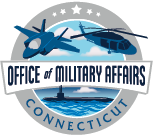Long Before Nuclear Power, There Was Turtle Power
Elizabeth Murphy
Navy Live Blog
September 7, 2014
On 17 July 1785, Thomas Jefferson wrote to his friend and colleague George Washington, requesting “you to be so kind as to communicate to me what you can recollect of Bushnel’s experiments in submarine navigation during the late war...” Washington replied two months later, declaring that although he did not “expect much success from the enterprise against an enemy,” the project was still “an effort of genius.”
The subject of the future presidents’ correspondence was a small submersible, roughly egg shaped and less than eight feet tall, designed and built by Connecticut inventor David Bushnell in the early 1770s. Her hull consisted of two oak shells held together by steel bands and slathered with a thick layer of waterproof tar. Interior features included ventilation tubes, a compass, and a device for determining depth. Affixed to the exterior was a primitive bomb. The operator entered the vessel through a hatch at the top, where small glass windows provided minimal light and visibility. Once inside, he alone was responsible for working the hand crank that propelled the vessel and the tiller that steered her. He also controlled the hand pump which regulated the ballast – water – that submerged and surfaced the craft. Once he sank beneath the waves and the ventilation tubes closed, the operator had about 30 minutes’ worth of air. Although his invention looked nothing like the animal, Bushnell named her Turtle after the carapace-like wooden halves that joined to form her hull.
In the spring of 1776, a year into the Revolutionary War, Bushnell wrote to General George Washington to ask if Turtle might be of some use in defending New York City’s harbor. Washington accepted the offer of assistance and even provided some funding to ensure the vessel’s readiness. Just before midnight on 6 September, Turtle, piloted by Army sergeant Ezra Lee, set out to prove her worth.
It took Lee two exhausting hours to navigate to his target, the 64-gun British ship-of-the-line HMS Eagle. Once he had positioned himself beneath the vessel, he was supposed to drill into her hull using a bit attached to Turtle’s upper hatch. Once the hole was deep enough, he would anchor his explosive device to the ship’s hull and then slip away, hopefully without being seen. He had about half an hour to put some distance between himself and Eagle before a clockwork mechanism detonated the charge. Unfortunately, all did not go according to plan. Lee’s bit struck some sort of metal on his first drilling attempt; a second was abandoned when Turtle bobbed to the surface and was spotted. As he headed for shore Lee released his “torpedo,” which exploded harmlessly in the middle of the East River.
“What astonishment it will produce and what advantages may be made ... if it succeeds, [are] more easy for you to conceive than for me to describe,” physician Benjamin Gale wrote to diplomat Silas Deane less than a year before Turtle’s mission. Although the attack was, strictly speaking, a failure, it’s likely neither man could have dreamed of what that “failure” would make possible. The seed Bushnell planted with Turtle, the idea that a submersible could be a viable instrument of war, bore fruit just over 100 years later when, in 1900, the United States Submarine Force was established. Only 50 years after that, the Navy launched USS Nautilus (SSN 571), propelled by a force, nuclear power, which would have seemed to Bushnell and his contemporaries like nothing short of magic. As hard as it is to believe when looking at a model of the tiny Turtle, the modern-day submarine force with its billion-dollar boats and highly-trained Sailors owes its existence at least in part to the homemade wooden craft and its single daring operator who sank no ships that night nearly 240 years ago, but did propel themselves into history, one turn of the hand crank at a time.
Elizabeth Murphy is Director of Education, Submarine Force Museum and Historic Ship Nautilus. (SSN 571)

